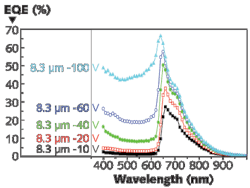NASA's Messenger spacecraft captures first orbital images of Mercury

Laurel, MD--NASA's Messenger spacecraft captured this historic image of the planet Mercury at 5:20 am EDT on Mar. 29, 2011 from high above Mercury's south pole and shows portions of Mercury's surface previously unseen. This image is the first ever obtained from a spacecraft in orbit about the Solar System's innermost planet.
Launched in August 2004, Messenger was designed, built and operated by the Johns Hopkins University Applied Physics Laboratory in Laurel. The craft is conducting the first orbital study of the planet Mercury, which is the smallest, densest and least explored of the planets. Messenger is only the second spacecraft to visit Mercury (after the Mariner 10 mission made several passes of the planet in 1974-75).
Messenger became the first spacecraft to orbit the planet Mercury on March 18, 2011. The craft carries the Mercury Dual Imaging System (MDIS), which comprises a multispectral wide-angle camera and a monochrome narrow-angle camera. The cameras map the rugged landforms and spectral variations on Mercury's surface in monochrome, color and stereo. The instrument is equipped with e2v (Essex, England) CCD imaging sensors, which had previously collected more than 1,200 images during each of Messenger's three flybys of the planet.
Additional images will be release later today, NASA said.
For more information visit NASA online.
Source: e2V
About the Author
Stephen G. Anderson
Director, Industry Development - SPIE
Stephen Anderson is a photonics industry expert with an international background and has been actively involved with lasers and photonics for more than 30 years. As Director, Industry Development at SPIE – The international society for optics and photonics – he is responsible for tracking the photonics industry markets and technology to help define long-term strategy, while also facilitating development of SPIE’s industry activities. Before joining SPIE, Anderson was Associate Publisher and Editor in Chief of Laser Focus World and chaired the Lasers & Photonics Marketplace Seminar. Anderson also co-founded the BioOptics World brand. Anderson holds a chemistry degree from the University of York and an Executive MBA from Golden Gate University.